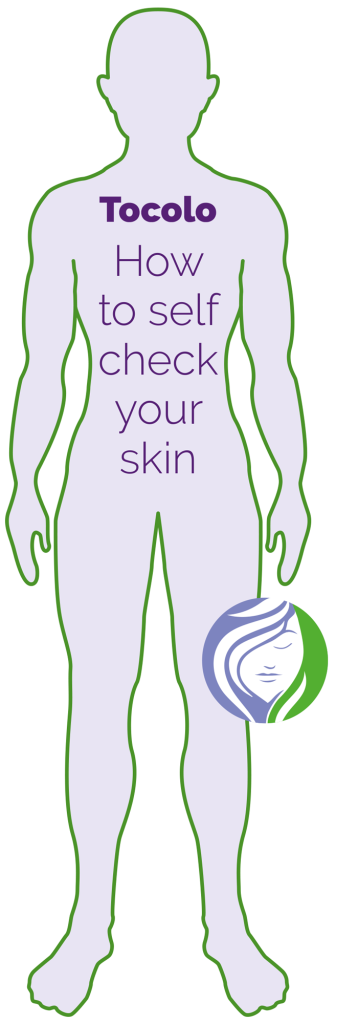Self-checking is of vital importance as it can decrease your risk of skin cancer
You need to know what is on your skin and how it looks.
Skin cancer is the most common cancer in the UK (Cancer Research 2016)
Self-Checking – It only takes 5 minutes!
Check all the areas that are clearly visible.
Face, arms, stomach, chest, thighs & calves.
Take photos to:
> Know what’s on your skin
> What it looks like
> Where it is
> Is it changing?
Check forgotten areas!
Ears, soles of feet, toes, elbows, neck, fingers, nails, groin and under your breasts. Take photos & measure
Regularly look at the photos & compare them to your skin for any changes in size, shape, colour, borders and symptoms such as bleeding, crusting, itching etc.
Check the areas that are not clearly visible.
Back, back of neck, back of legs & scalp. When checking the scalp use a hair dryer to help you part the hair to see.
Two ways to check areas that are not clearly visible:
> Use a hand mirror
> Get someone to help. Partners, siblings, parents etc.
And don’t forget to take photos & measure.
Fingers & toe nails:
If you spot a vertical line that is brown across your fingernail
get this checked. This could be a sign of skin cancer.
Tocolo moles / lesions pages
Mole / lesion
scanning service
If you have a mole, lesion or skin condition you’re worried about this service is for you!
How to self
check your skin
Self-checking is of vital importance as it can decrease your risk of skin cancer – here’s how.
Information
about moles
We’ve compiled some information about moles and lesions – showing examples, to show people what to look out for.

